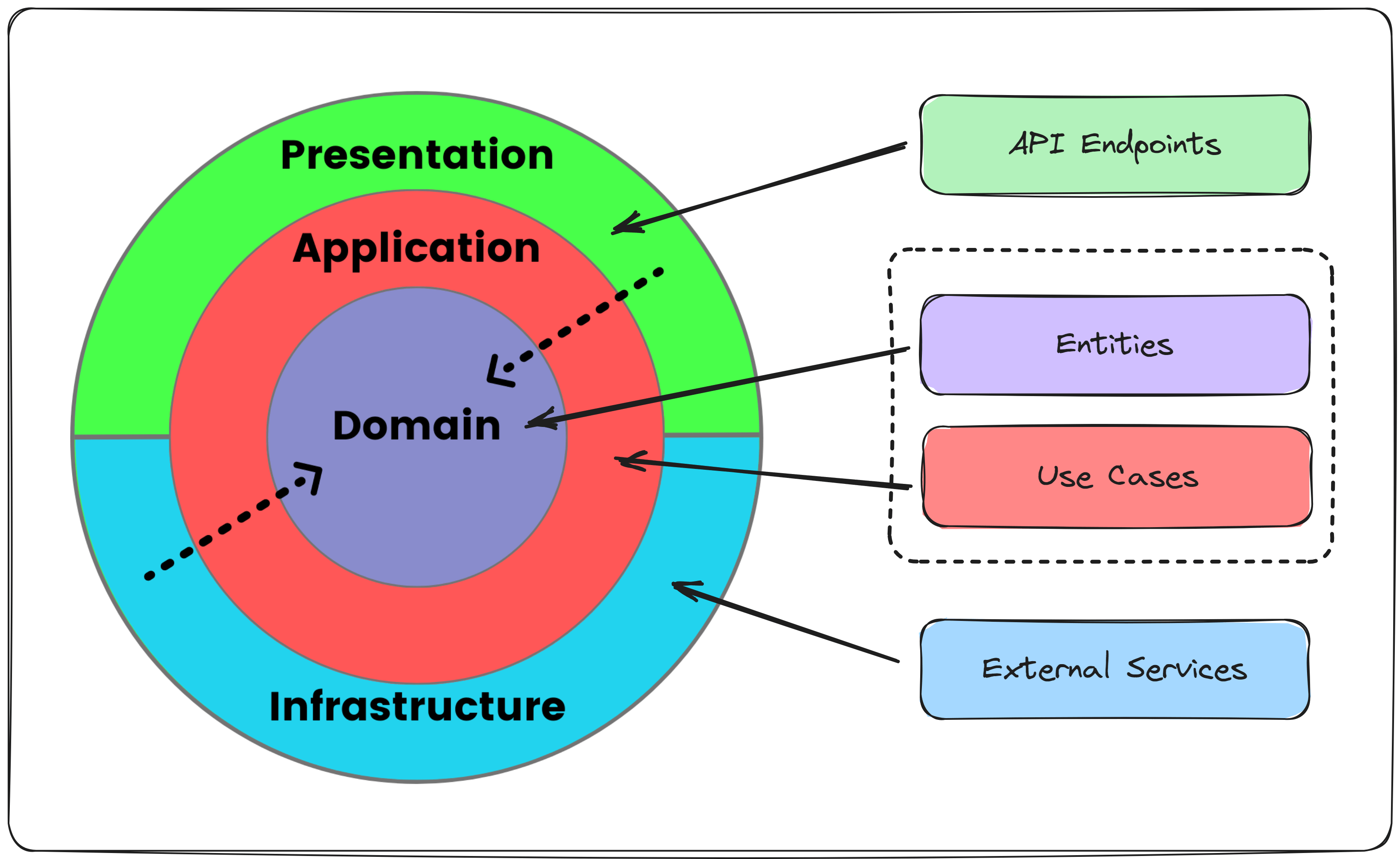A starter template for Clean Architecture solution in ASP.NET Core minimal API. Domain model is designed using Domain Driven Design techinques.
Clean Architecture is a different take on the N-Layer architecture with a focus on decoupling and dependency inversion. It pays off when you have complex business logic than for solutions that are more CRUD based.
Image Credit [https://twitter.com/mjovanovictech/status/1719700976649572701]Main advantages of Clean Architecture are
- Business Logic encapsulated into the Domain model
- Applicatoin layers takes care of orcestration and workflows
- Domain Layer has no dependency on Data Layer
- Better testability
- Fits closely with Domain Driven Design
- Domain layer captures business rules.
- Uses tactical design techniques from DDD to design
- Entities : Objects that can be identified using an ID
- ValueObjects : No separate identity, if the values are same then they are treated as equal.
- Aggregates : The aggregates defines the transaction boundary. It is a group of entities and value objects. The aggregate has a root entity which interacts with interacts with the rest of the system. Aggregate root is suppose to ensure the invariance and consistancy with in the aggregate. Do not create big aggregates, it will affect the performance of the system.
- Services : Domain services captures rules that does not fit into a entity or aggregate. For eg, rules that span across aggregates.
- Events : Invariances across aggregates are ensured using events and event handlers. The changes across aggregates are guaranteed to be consistant eventually.
- Domain models desinged as solution to the problem statement, not based on how the data will be stored. Data persistance should follow the model as it evovles.
- Avoid Anemic classes. Use good old object oriented techniques like abstraction, encapsulation etc to create rich model.
- Orchestrates the interaction among domain model to capture various business use cases.
- Implements CQS (Command Query Segragation) pattern
- Command operations makes use of the domain model enforcing the aggregate invariants, while query operations are done directly without the overheads of the domain models.
- Web API layer using ASP.NET Core minimal API
- Uses the application layer to execute business use cases
- No business logic in this layer, focus on web server concerns like HTTP request/response, routing etc.
- This layer takes care of interfacing with external systems, like database, external APIs, message queues, storage etc.
- Entityframework Core used as ORM tool. Code first migration to generate the database from code.
- Entityframework Core features allows us to keep the ORM mapping and configuration separate form the entity model, allowing the flexibility to model the entities based on the business concerns rather than focuing on database mapping.
